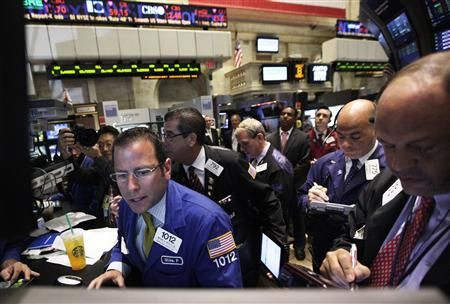Wall Streeters' Anthem - 8 Reasons It Should Be "Don't Cry For Me, New York City"

Every year the New York State Comptroller puts out a review and forecast of details on New York City's securities industry and its effect on municipal coffers. According to that report, the industry had a strong first half of 2013, with broker/dealer profits of $10.1 billion, but profitability is likely to be lower in the second half of the year.
Here are eight other highlights from this year's report.
• Despite strong profits over the past four years, the
securities industry is smaller in New York City
than before the financial crisis. Securities industry
employment clocked in at 163,400 jobs in August 2013,
25,600 fewer (13.5 percent) than before the crisis.
• The securities industry showed strong job growth
during the first part of the recovery (adding 9,600
jobs), but since August 2011 it has resumed
streamlining and has lost 7,300 jobs.
• New York City has experienced very strong
private sector job growth during the recovery, but
the securities industry has made only a small
contribution (less than 1 percent). In contrast, the
industry played a much larger role in employment
growth during prior recoveries.
• The average salary in the securities industry in
New York City was $360,700 in 2012. While the
2012 average was less than the 2007 peak, it was
higher than in any year prior to 2007, and was
5.2 times higher than the average salary in the
rest of the private sector.
• The securities industry is one of the city’s main
economic engines. Even though the industry
accounted for only 5 percent of private sector jobs
in 2012, it accounted for 22 percent of wages.
• OSC estimates that city tax payments from
securities industry-related activities (including
capital gains) grew by 27 percent to $3.8 billion
last fiscal year, fueled by changes in federal tax
rates. This represents the second-highest level on
record, and it's higher than before the crisis.
• Last fiscal year, securities-related activities
accounted for 16 percent of New York State’s tax
revenue and 8.5 percent of New York City’s.
• Regulatory reform has proceeded at a slow pace.
Less than half (40 percent) of the rules required by
the Dodd-Frank Act have been completed,
although the industry has begun to modify its
practices in anticipation of regulatory changes.
© Copyright IBTimes 2025. All rights reserved.
Join the Discussion






















